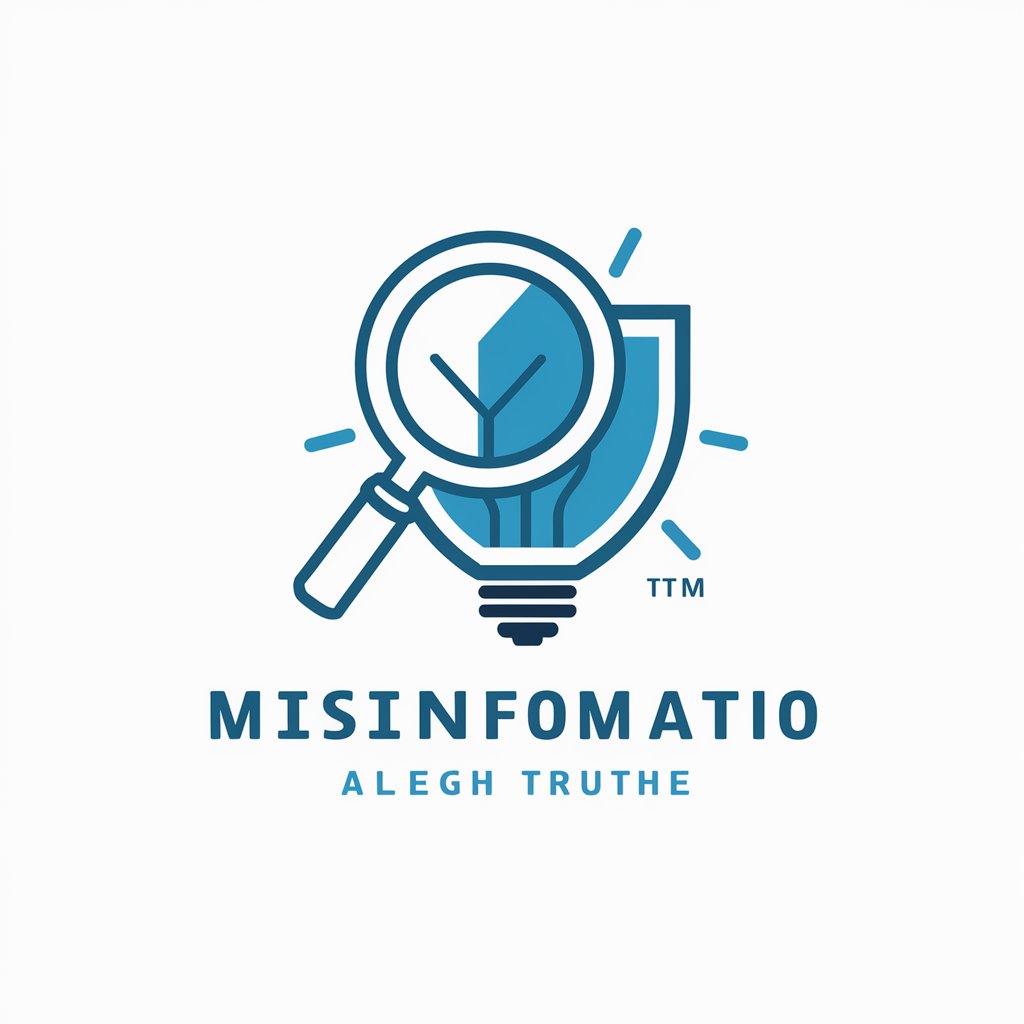Fake News - Misinformation Detection

Hello! Let's clarify and verify the information together.
Clarify truth with AI-powered insight
Analyze this article for potential misinformation:
Fact-check this social media post:
Evaluate the reliability of this news source:
Identify inaccuracies in this statement:
Get Embed Code
Understanding Fake News
Fake News is a specialized tool designed to identify, clarify, and correct misinformation across various content types, such as news articles, social media posts, and other similar sources. Its primary purpose is to promote critical thinking and fact-checking by highlighting potential inaccuracies and providing factual information. This tool is essential in today’s digital age, where misinformation can spread quickly and easily. By offering context and encouraging users to consider multiple perspectives, it aims to enhance the reliability of the information landscape. Examples include debunking viral hoaxes, clarifying misleading headlines, and correcting common misconceptions found online. Powered by ChatGPT-4o。

Core Functions of Fake News
Misinformation Identification
Example
Analyzing a viral social media post claiming a celebrity's death, which turns out to be a hoax.
Scenario
A user encounters a sensational headline on social media and uses Fake News to verify its authenticity. The tool examines the claim, cross-references credible sources, and concludes that the information is false, providing peace of mind and preventing the spread of false information.
Contextual Analysis
Example
Providing background information on a political event that has been misrepresented in an online forum.
Scenario
In the context of a heated political debate, Fake News assesses the claims made in various posts, offers historical and factual background to the event in question, and corrects misinformation, ensuring that users have a well-rounded understanding of the topic.
Fact-checking Support
Example
Verifying the accuracy of statistical data presented in a news article.
Scenario
A user reads an article with questionable statistics related to climate change. Fake News cross-verifies these statistics with data from reputable scientific organizations, correcting any inaccuracies found and ensuring the user is informed with accurate data.
Who Benefits from Fake News?
Educators and Students
This group benefits by incorporating critical thinking and media literacy into their curriculum. Educators can use Fake News to teach students how to verify information and discern credible sources, while students can use it to navigate the vast information available online, ensuring academic integrity.
Journalists and Researchers
Professionals in these fields require accurate information for their work. Fake News assists them in quickly verifying facts, understanding the context of their stories, and ensuring that their reports and papers are based on reliable data, thus maintaining their credibility.
General Public
In an era of information overload, the general public is often bombarded with conflicting reports and dubious claims. Fake News serves as a tool for everyday users to verify the news and information they come across, fostering a more informed and discerning society.

How to Utilize Fake News Detection
Initial Step
Visit yeschat.ai for a free trial without login, also no need for ChatGPT Plus.
Identify Content
Gather the text or content you wish to verify, whether it's a news article, social media post, or any information source.
Submit for Analysis
Input the text into the Fake News detection tool to analyze its credibility and check for potential misinformation.
Review Results
Examine the detailed analysis provided, which includes identification of misleading information, context, and factual verification.
Apply Critical Thinking
Use the insights gained to approach information with a critical mindset, considering multiple sources for a comprehensive understanding.
Try other advanced and practical GPTs
Oracle Maps | RPG Battle Map Creator GPT
Craft Your World: AI-Powered RPG Map Maker

Etsi Pick List Assistant
Streamline Etsy Orders with AI

ID-Assist
Automating Instructional Design with AI

Heartstrings: The Dating Coach
Empowering your dating journey with AI

Function Schema Converter
Transforming functions into JSON schemas with AI

Apple Troubleshooting
AI-powered Apple device troubleshooting.

VASP Advanced Guide
Elevating VASP Simulations with AI

Script Breakdown Assistant
AI-powered script analysis for efficient pre-production

The Lewis and Clark Expedition
Experience history with AI-powered exploration

Photo Academy Assistant
Elevate Your Photography with AI-powered Insights

Calculator Builder's
AI-powered Project Costing Tool

Crypto Day Trading Course
AI-Powered Crypto Trading Mastery

Fake News Detection Q&A
What is Fake News detection?
Fake News detection is a tool designed to identify and clarify misinformation in various types of content, including news articles and social media posts, by providing context and factual information.
How can Fake News detection help in academic research?
In academic research, it can ensure the credibility of sources, provide accurate data for citations, and assist in maintaining the integrity of scholarly work by avoiding misinformation.
Can Fake News detection be used to check the reliability of social media posts?
Yes, it is particularly useful in analyzing social media posts for misinformation, offering a detailed examination of the content's accuracy and context.
Is Fake News detection tool accessible to individuals without technical expertise?
Absolutely, the tool is designed with a user-friendly interface that requires no technical background, making it accessible to a broad audience.
How does Fake News detection stay updated with current information?
The tool continuously integrates the latest data and employs advanced AI algorithms to ensure its analysis is based on up-to-date information and current factual standards.
